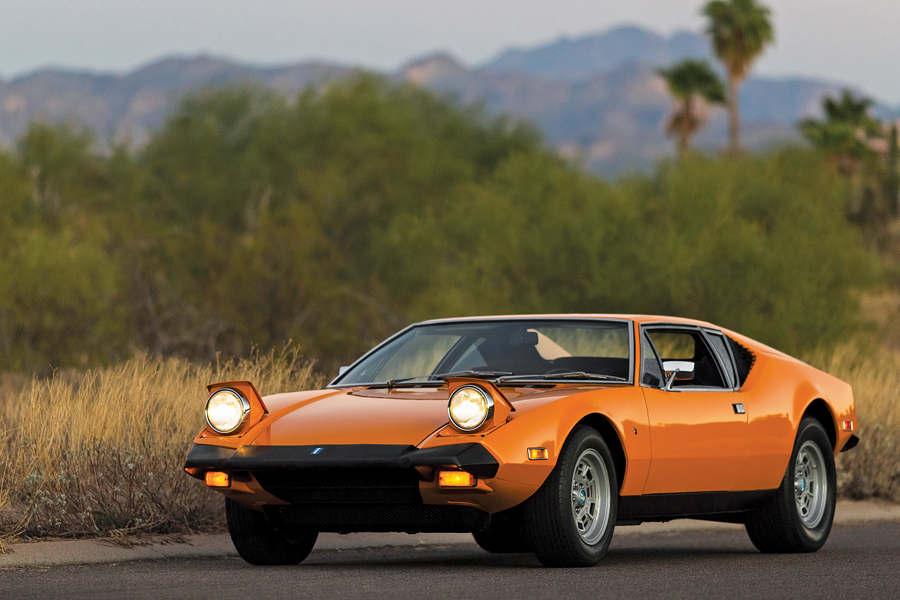Chassis Number: THPNNR05756
Ford Motor Company president Lee Iacocca was a man who fostered bold new ideas and had the clout to turn them into reality. Among his wildest notions was that of a mid-engine supercar that could be sold by a Ford dealer, cooked into being with his great friend and former Argentinean racing driver Alejandro DeTomaso, in a storied collaboration with noted sports car designer Tom Tjaarda on behalf of respected Italian coachbuilder Ghia.
The resulting DeTomaso Pantera was built in Italy but sold largely through Lincoln-Mercury dealers in the United States with a full factory warranty. It combined the dead-reliable 351-ci Cleveland V8 engine and American-style comforts — including power windows and air conditioning — with such European performance features as a ZF transaxle, power-assisted 4-wheel disc brakes, and rack-and-pinion steering.
Simply put, it was the best of all possible sports car worlds and it cost considerably less than a comparable Ferrari or Lamborghini. Several different variations of the Pantera were produced over the years.
The one that Americans instantly recognize is the second-generation Pantera L, or Lusso (“Luxury”), which incorporated several detail changes for the U.S. market.
Most notably, the Pantera L was significantly better built than earlier examples, a fact recognized and lauded by the automotive press of the time.
This car was found to be remarkably and impressively original, including its Pantera Orange finish, the factory interior down to the carpets (protected since new by sisal mats), and even the four original Goodyear Arriva tires.

